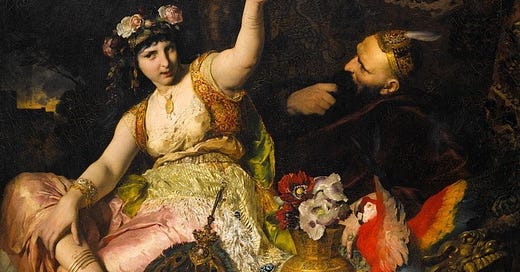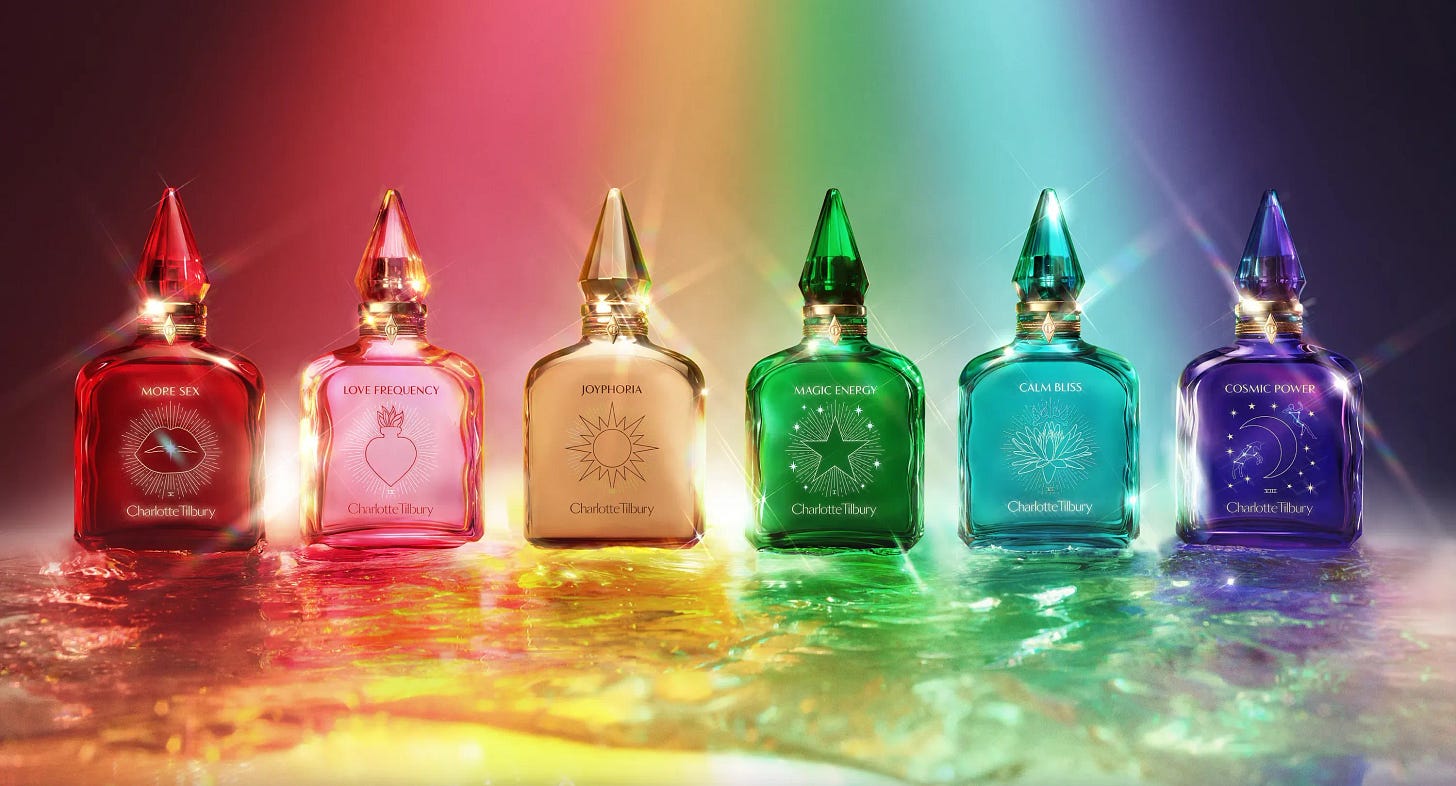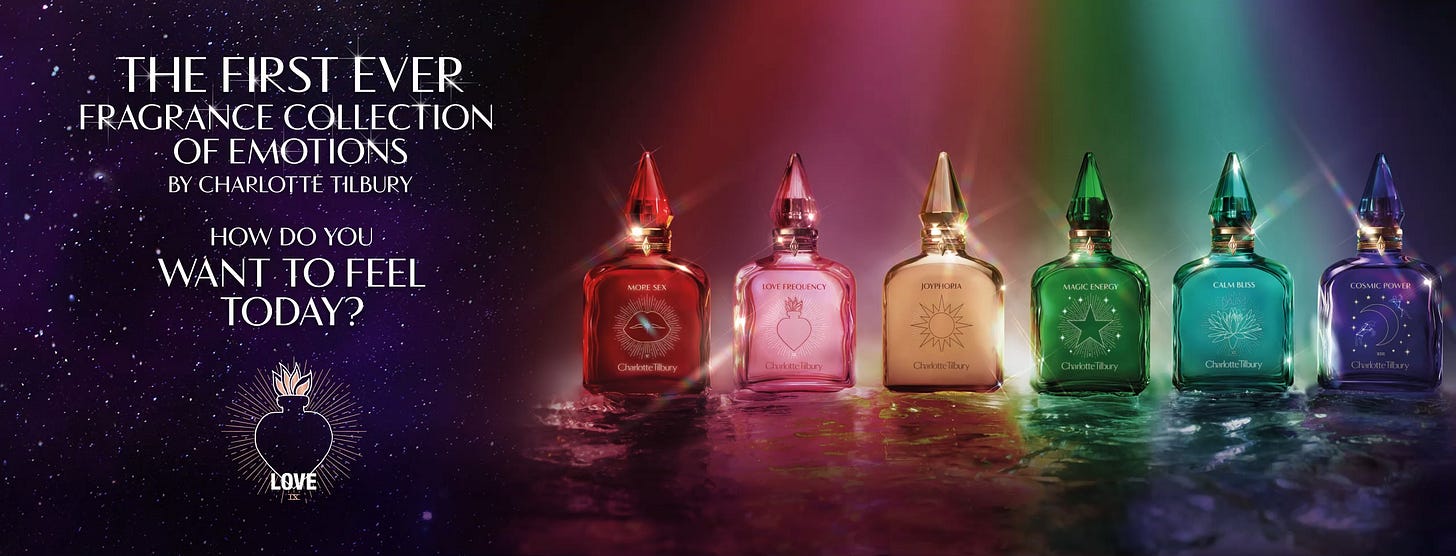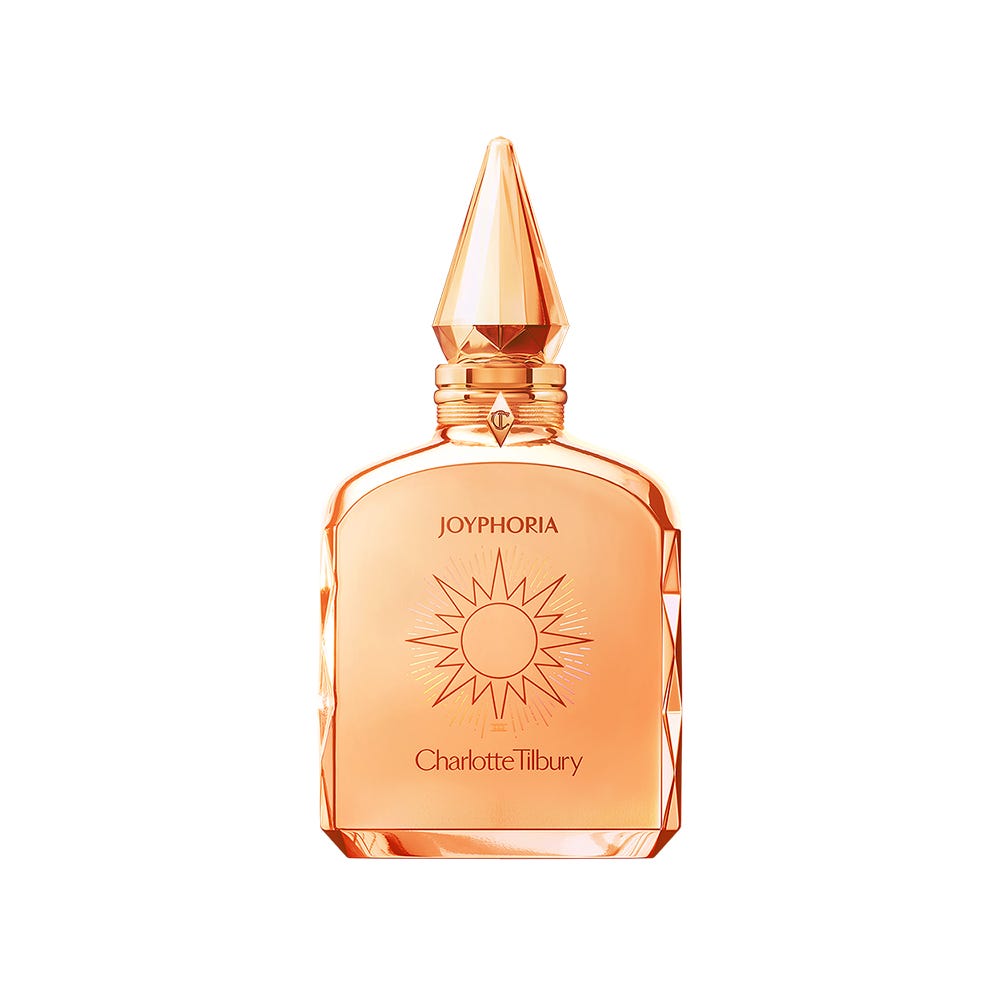A sigh of relief is heard around the world: the longest January of all time is finally over. February in Australia is when summer really gets mean: school’s back in session, there’s guaranteed to be a flood or a bushfire happening somewhere, and no matter where you live you’re going to sweat. February is a month you can’t live through but must defeat to reach the end: bring it on.
Last weekend I travelled down to Sydney and smelled as much as humanly possible. I usually track first impressions and quickfire reviews on Instagram, and still have all the blotters lined up waiting for me to add them to my perfume super spreadsheet. Though nothing blew my mind there was a lot to ponder as I smelled, including thoughts on Amouage and Initio’s new releases and a resniff of the intriguing Tsu Lange Yor.
Looking forward to February, the list of to-sniff perfumes grows with the barrage of new scents announced and released every week. But one to keep an eye on is the new release from Aesop, Aurner. It’s being marketed as a magnolia and chamomile scent, in line with Aesop’s botanical themed brand aesthetic. Chamomiles can be hard sell (as I mentioned in last week’s Chasing Scents article), but the perfume is more notable for the fact that it’s the first Aesop scent since Tacit (2015) that hasn’t been composed by Barnabe Fillion, who has built the brand’s signature olfactive style for the better part of a decade.
The timing of this, given that the acquisition of Aesop by L’Oreal in 2023 has had time to cool and set, is ominous indeed. The nose behind Aurner is Celine Barel, the IFF perfumer who also made Tacit.
The fear when niche houses (at least, those who had enough originality to be notable) are acquired by the big conglomerates is that the independence that made them brilliant will be cannibalised by hyperinflated sales targets and consolidated supply lines. Perfume can be a heartline to the changing spirit of a brand, the smelling of them a palm reading: you can see where the paths diverge and the change happens. I’m keen to see what Aurner has to tell us about what Aesop is going to become.
Lastly, I want to thank everyone who’s read, liked, or commented on this Substack in the last month - it’s very much appreciated. Your comments bring a brightness to my day that I hope the newsletter does, in turn, for yours.
M
Puig’s Gamble: Perfume and Charlotte Tilbury
Every so often you smell a line of perfume that makes you wonder why humanity was put on the earth, and Charlotte Tilbury’s ‘Fragrance Collection of Emotions’ is one of them.
Charlotte Tilbury (the brand) is a makeup empire owned by Puig, a Spanish conglomerate who have spent the last decade on an acquisition frenzy to become one of the giants of the perfume industry. Their portfolio now includes Carolina Herrera, Paco Rabanne, Jean Paul Gaultier, L'Artisan Parfumeur, Penhaligon's, and the triumph of banality that is Byredo, which Puig acquired in 2022.
With an established presence in the fragrance industry, it’s easy to see why Puig would consider it good business to add perfume lines to their currently unscented beauty and luxury brands. (Charlotte Tilbury did release a perfume, the now discontinued Scent of a Dream, in the pre-Puig era of 2016, but it never made strides in the luxury or fragrance markets and was discontinued a few years later.)
Charlotte Tilbury (the woman) has a public persona that you either find delightful or slightly terrifying; the direction you will lean has a direct correlation to your feelings about daytime soap operas and your likelihood of joining a cult. She’s always talking about ‘harnessing the power of you, darlings’, and follows the path paved by Tom Ford by giving her products suggestive names like Hot Lips and Pillow Talk.
All of this means that Tilbury does seem like someone who would be excessively perfumed, like your aunt who's a bit too into crystals and sprays enough White Diamonds to create a personal atmosphere that starts above her bouffant and suffocates anyone who gets too close. If I were Puig, I would want to capitalise on Tilbury’s effusive persona and launch a line of perfumes as quickly as possible.
The new fragrance line is introduced on Tilbury’s website in what may be one of the greatest paragraphs of perfume nonsense ever written:
Darlings, how do you want to feel today? Discover my six NEW! fragrances powered by Emotion-Boosting Molecules - they are your invisible superpowers that allow you to spray on your dreams and unlock emotions! Backed by neuroscience and 40 years of research, my NEW! perfumes are scents that make you feel! Fragrance is the frequency that you emit to the world!
Released in 2024, Tilbury’s new line contains six perfumes - Calm Bliss, Love Frequency, More Sex, Cosmic Power, Magic Energy, and Joyphoria.
The bottles are dagger-tipped, jewel toned and, like Tilbury herself, glazed with a kind of unreality that borders on the fantastical. These perfumes look like something from the armoire of the Evil Queen in Snow White - or perhaps from the gilded prison where Scheherazade prepares for another night of stories. Such a bold style choice is divisive, but there’s something about their high pitched gaudiness that I enjoy (like a corvid, I am drawn to shiny things).
Though the bottles have the biggest impact lined up together, on the whole perfumes released in batch collections are a bad bet. The only bulk drop of perfumes I can think of where every one was worth smelling was the debut nine fragrances from Frederic Malle in 2000 (and even that had the wan Angeliques sous la Pluie). There’s far more value in making one perfume as good as it can be rather than making six and hoping one of them is kind of okay.
The marketing for this perfume line has the subtlety of an anvil and the overall feeling of a particularly breathy street hawker trying to push a bottle of snake oil. The descriptions employ an interesting blend of all-caps phrases and purple prose to concuss you into sampling the scents.
For Cosmic Power, the description page reads:
Cosmic Power is a LUXURIOUS and OPULENT SYMPHONY of SPICES. Its unique and distinctive trail derives from the POWERFUL combination of bold black pepper oil, divine cinnamon bark oil and fresh woody elemi oil. The EXQUISITE union of precious rose ultimate, mystical amber, ancient frankincense accord and enchanting vanilla bean extract, creates the warm, SPICY and ADDICTIVE signature of the fragrance.
COLOUR THEORY: Purple is associated with royalty, creativity, power and AMBITION! NUMEROLOGY: The number 8 (VIII) on the bottle is said to represent POWER, COOL, CALM CONFIDENCE + a laser-focused vision. SYMBOLOGY: The unicorn symbol on the bottle is believed to represent POWER, MAGIC + POSITIVITY and the moon has long inspired CURIOSITY AND WONDER!
The new Tilbury line has been developed by IFF, and they’ve brought out the big guns: the majority of the line has been created by Anne Flipo, with one scent apiece for Dominique Ropion and Juliette Karagueuzoglou.
The line also proudly promotes the use of AI in development of the scents. From Tilbury’s website:
Over the past 40 YEARS, IFF have tested thousands of fragrance notes in an unconscious study into brain emotions – what you cannot control, and a conscious user study into scent emotion – based on how you feel and what you say! Using technology at the cutting edge of science, they have collected this data with their IFF SCENTCUBE™ algorithm! This innovative technology works its magic to identify the notes and accords used in fragrances that are proven to enhance specific feelings. I worked with scientist Céline Manetta at IFF, using the IFF SCENTCUBE™ algorithm and collaborating with IFF’s master perfumers to curate a palette of emotions that could be evoked through the power of scent!
There’s something about all of this - the gaudy bottles, the bizarre marketing, the targeting of people who know their astrology sun moon rising signs - that I would usually find quite funny. There’s a lot of humour to be found in the world of perfume, a tendency for brands to branch off into the melodramatic or the absurd in an attempt to shift bottles. Unfortunately I find myself hoping the line won’t do too well, because the state of the niche and designer perfume market is dire enough without companies believing that they can use a computer to replace a nose.
But my rule is to smell everything, and part of me was interested to see if three great perfumers and IFF’s Robocop were capable of producing a single good fragrance out of the six. In a way the intense bizarreness of the marketing inoculates you to smelling the Charlotte Tilbury perfumes: they are exactly what you expect them to be.
Love Frequency is the rose one (you can tell because the bottle is pink). Upon smelling it an avalanche of things became very apparent: the perfume smells almost exactly like Sweet Diamond Pink Pepper 25 (Kayali, 2021), and that’s by design because the Kayli line are the blueprint for these perfumes. The bottles, the colours, the olfactory style - it’s all riffing on the Kayali scents with the hope to lure the same demographic. On an industry level, the Kayali scents are a runaway success story and the playground of Firmenich, one of IFF’s rival fragrance houses. Easy money for IFF and the Bicentennial Man - all they’ve got to do is copy Firmenich’s homework.
And this they do - More Sex is the leathery one, Calm Bliss is the acquatic one (you can tell because the bottle is blue), Magic Energy is the ‘unisex’ one, Cosmic Power is the ambery one, and Joyphoria is the floral. In smelling each of these perfumes I could immediately tell which popular mass market scent they were cribbing. The line is basically a Spice Girls line up of every popular scent of the last ten years, with one glaring exception: there isn’t a dedicated gourmand.
The most interesting in the line is undoubtedly Joyphoria, and it is the scent I have revisited most often.
The notes listed for Joyphoria include: joyful petitgrain oil, euphoric coconut water accord, uplifting neroli oil, intoxicating tuberose absolute, warm jasmine sambac, radiant ylang ylang, enchanting vanilla bean extract, velvety cashmere wood, and powdery musks. (One can only assume Puig gets paid per adjective).
Joyphoria is a riff on the synthetic white florals of Alien Goddess (Mugler, 2022). Its opening accord of tuberose and coconut pulls off a clever trick of feeling lush and full but also aerated, like a bouquet of flowers sitting in a room the perfect size so that their fragrance fills the air but doesn’t become cloying. I liked this so much on the blotter that I went ahead and sprayed it on skin - a mistake, as this opening is a mirage that fades after an hour and leaves a thin sunscreen-reside salicylate scent that combines with the line’s trademark cedarwood-amber drydown.
Tilbury’s site claims that “91% agree (Joyphoria) enhances feelings of happiness”. It’s difficult not to picture Tilbury herself standing over these poor test subjects, staring at them with perfectly lined eyes and saying ‘don’t you feel enhanced, darlings?’ I would have said yes too - and then promptly fled, leaving Joyphoria’s limp sillage in my wake.
You know the feeling when you’re looking at an image and there’s something about it that’s not quite right - the lines too smooth, or the proportions slightly skewed - that starts to pull the ‘this is AI’ lever in your brain? Smelling the Tilbury perfumes is the olfactive equivalent of that. I understand all the moving parts in these perfumes, I know what they’re aiming for, but there’s just something off about them.
The entire line is connected by a distinctive woody-amber accord in the drydown that is an obvious riff on the saffron-ambroxan heart of Baccarat Rouge 540 (Maison Francis Kurkdjian, 2015). There are parts of them, like Joyphoria’s lovely white floral opening, that are pleasant, but as an entire perfume each one is a mess of accords that don’t work together in harmony and don’t clash in a way that feels meaningful. They give me the same feeling as reading a clickbait Buzzfeed headline when what I want is the sharp bite of Reductress.
Par for the course with art ‘enhanced’ by AI, the Tilbury perfumes are derivative and uninspiring. At a cool $265AUD for 100ml, they’re a hard sell (they’re also sold in more accessible 10ml rollerballs for $40AUD, for which I credit the brand). It is Puig’s gamble that the people who buy Charlotte Tilbury perfume and wear other, better perfumes will smell a ghost of a note that they recognise here and be lured in by the pseudoscience and the pretty bottles to buy one of these jeweled disappointments.
The problem with the Tilbury perfumes is the same as a book that’s marketed by the tropes it contains: there’s no substance, and only the idea of style. Each of these perfumes are a mishmash of accords and ideas that worked well in other perfumes and are thrown together badly here in the hopes something will stick. Instead of seeing an idea curated to perfection, in the bones of these perfumes you can see Puig’s brief: “our target market is women 18-40. Give us something that will sell.” Thus we get perfumes that are meant to appeal to a broad market and end up appealing to no one at all.
I find myself wandering back to the stand to smell the Tilbury perfumes, Nietzschean depression potions that they are, and wondering about the ex machina of it all. How involved was the AI technology, and what did it do? Did the perfumers plug in the scents that they wanted to copy from and the AI gave them a formula list? If they were targeting a demographic that is obsessed with vanilla, why isn’t there a clear gourmand (Cosmic Power gets closest, but isn’t sweet enough)? Did they intend More Sex to smell of burnt plastic and the dust that gathers at the bottom of your handbag? The questions linger longer than the sillage.
In a way, it’s more encouraging to me that this gamble gave us six bad perfumes than the alternative. What’s missing from the marketing and copy and pseudoscience and indeed the smell of the Tilbury perfumes is the one thing every great fragrance needs, and that’s artistry: you don’t need AI to make a bad perfume, but the Charlotte Tilbury perfumes show that AI also can’t make a good one.
It takes a person to make a perfume that speaks to another person. It takes a person to make art.
If you had told me before I sampled perfumes called Love Frequency and Magic Energy that they would make me ponder the nature of humanity itself, I would have laughed. But then, the Charlotte Tilbury perfumes have always claimed to have “Emotion Boosting Molecules”, and that case they’re a complete success: I have never felt more appreciation for perfumers and less respect for a conglomerate than I did after smelling them.
And that, darlings, is the exact frequency I’m always happy to emit.■









Loved reading this, your writing is acerbic and addictive!
It’s funny that you mention Charlotte Tilbury and Tom Ford because I think she was the creative director for Tom Ford beauty before starting her own line